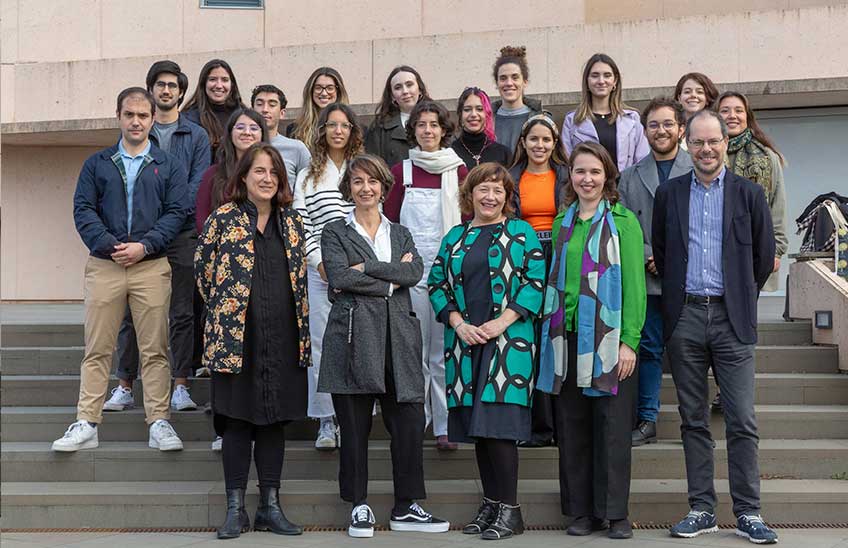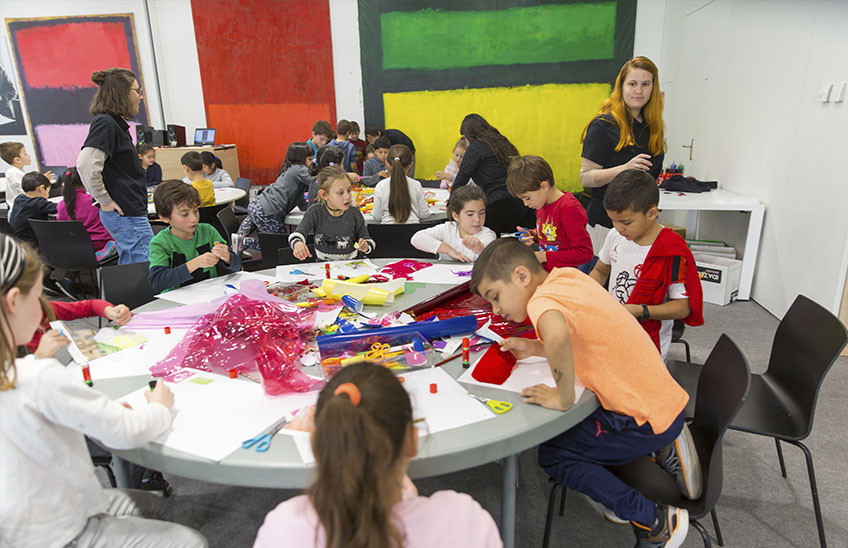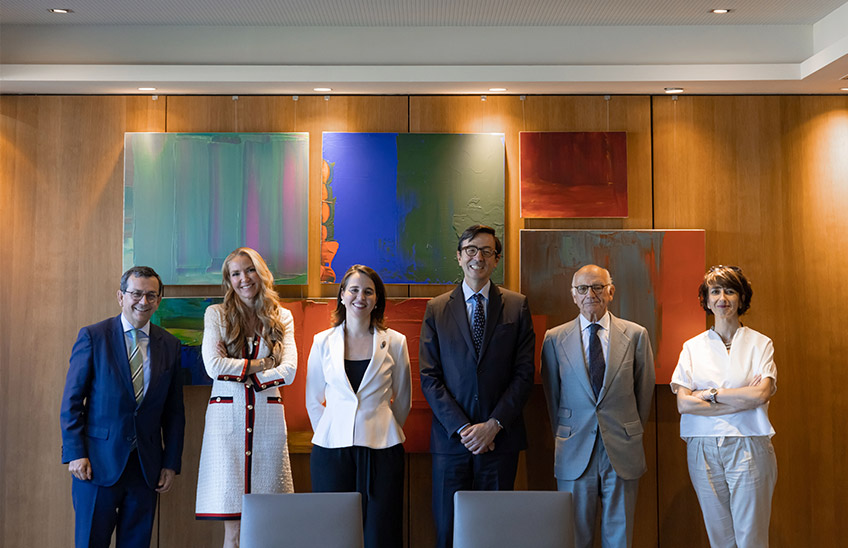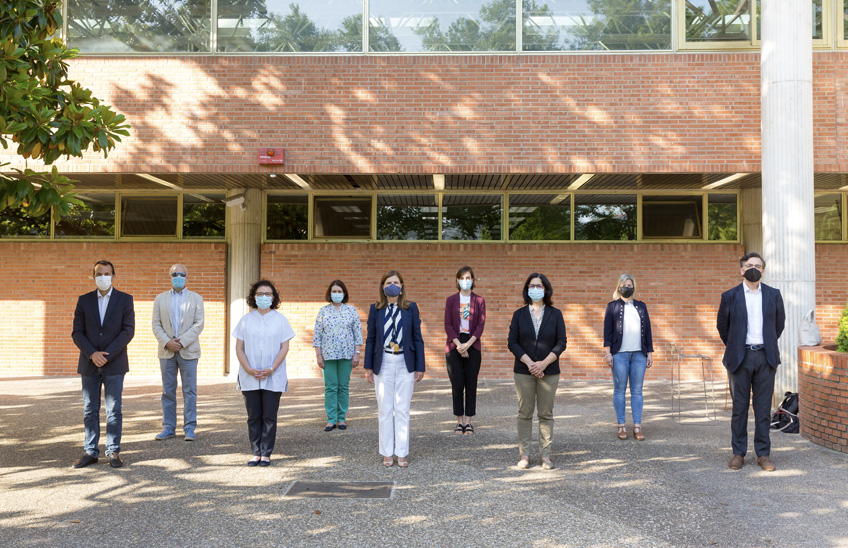Art, tool for future doctors: 38 medical students are studying palliative care at the MUN subject
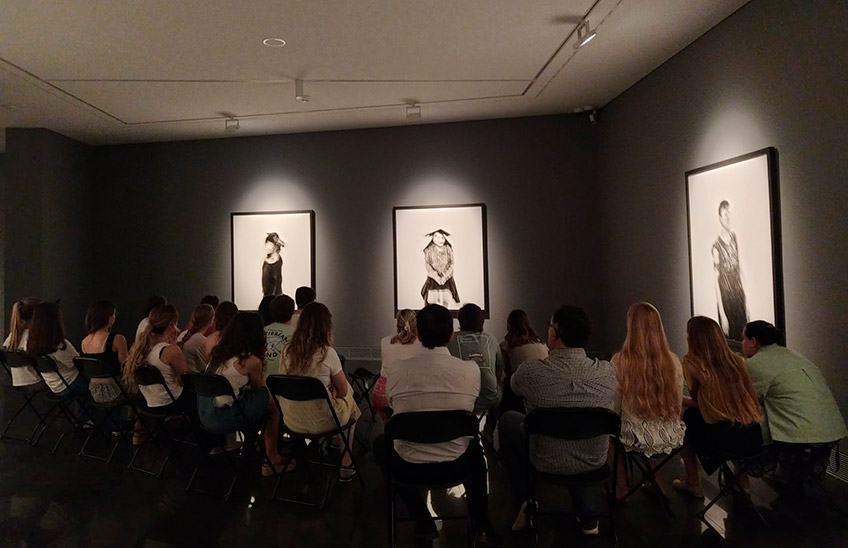
FotoMUN/Medicine studentsattend class in one of the exhibition rooms at exhibition "The edge", by Álvaro Laiz
16 | 06 | 2022
Art as tool for the training of future doctors. This is the pillar of Decision making at the end of life, a subject elective subject of the School of Medicine taught at the Museum of the University of Navarra. For a week, 38 students from 1st to 6th year of Degree attended the sessions in the exhibition rooms, where, using visual thinking and object-based learning methodologies, they approached palliative care through art. The classes, taught in English and Spanish, were led by Fernado Echarri, manager of the MUN's educational area , Peca Macher, a student at doctorate, and by doctors and professors Rocío Rojí, from the University of Navarra, and José Pereira, from McMaster University in Canada.
"This subject is special: it tries to delve into fundamental aspects of the art of being a doctor. Leaving School of Medicine and being in this environment is already important because they leave their usual way of learning," says Rojí. In this sense, he stresses that "putting them in front of a work of art and helping them to feel and reflect positions them to face the content of the subject in a more open and more staff. Sharing this experience among them, discovering the diversity in art and the different points of view leads them to understand that each patient is also unique and that there are different ways of approaching them".
Pereira also explains that "art sensitises students to the diversity of thoughts, values, hopes, fears and personal stories that patients bring. It makes them appreciate the individuality of each patient, who has their own stories, illnesses and healing processes. It emphasises the importance of listening to them and exploring their personal journeys and not making assumptions. This awakens in them a common humanity with the patients they will care for.
The MUSEUM, STAGE professor
The professor appreciates that the museum offers "a learning environment that enriches reflection". "It creates a safe place where both students and teachers can ask questions and share thoughts. It also fosters humility and a sense that we can learn from everyone. It takes students out of what some may perceive as the 'strongholds' of health care institutions and into areas shared by society. It therefore connects medical students with their community and society at large.
In the classes, students contemplate different works from the Museum's Collection and exhibitions and then ask open questions about what they have seen, which they are asked to answer at student body . This is one of the proposals offered by the Museum as tool professor , a space with great flexibility to adapt to the needs of the different Schools and centres. This is Rojí's assessment: "The Museum is a very powerfultool , from the surroundings and the building to what it contains. The Collection and the temporary exhibitions make source an inexhaustible source of inspiration for students and teachers. The spaces are very appropriate and the students feel very comfortable. The educational area collaborates a lot and gives us a plus that we are not able to transmit".

